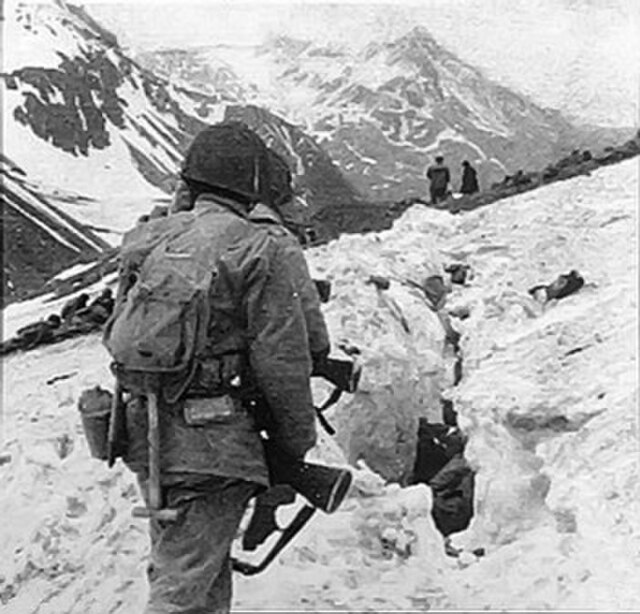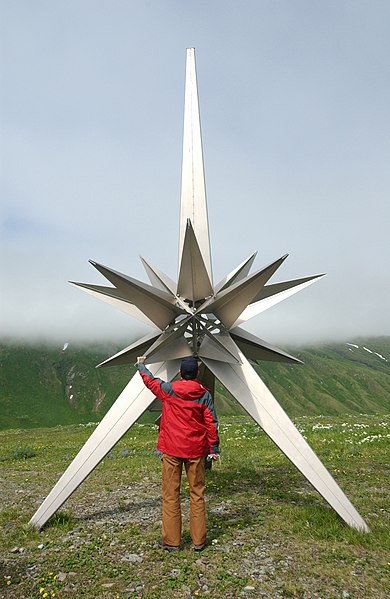The Battle of Attu, which took place on 11–30 May 1943, was fought between forces of the United States, aided by Canadian reconnaissance and fighter-bomber support, and Japan on Attu Island off the coast of the Territory of Alaska as part of the Aleutian Islands campaign during the American Theater and the Pacific Theater. Attu is the only land battle in which Japanese and American forces fought in snowy conditions, in contrast with the tropical climate in the rest of the Pacific. The battle ended when most of the Japanese defenders were killed in brutal hand-to-hand combat after a final banzai charge broke through American lines.
U.S. soldiers fire mortar shells over a ridge onto a Japanese position on 4 June 1943
Imperial Japanese Army Colonel Yasuyo Yamasaki led Japanese forces during the Battle of Attu in May 1943. He died leading a banzai charge during the final attack.
Attu village at Chichagof Harbor in 1937. It was occupied by the Japanese in 1942/43.
A U.S. Navy reconnaissance photo of four Japanese Mitsubishi A6M-2N Rufe seaplane fighters at Holtz Bay, Attu on 7 November 1942.
Attu is an island in the Near Islands. It is the westernmost point of the U.S. state of Alaska. The island became uninhabited in 2010, making it the largest uninhabited island that is part of the United States politically.
Attu Island
Attu village in June 1937
U.S. troops negotiate snow and ice during the Battle of Attu in May 1943
The Second World War peace memorial on Attu Island







